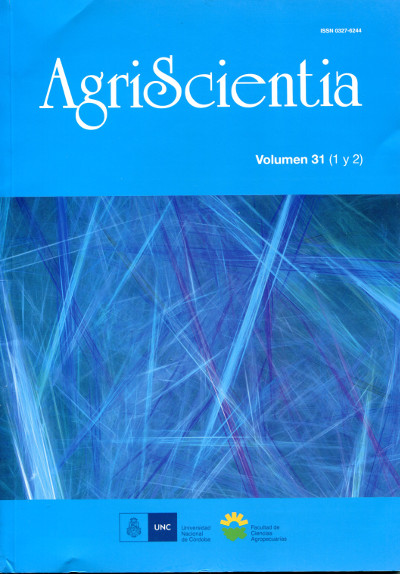Soil pore distribution as affected by cattle trampling under no-till and reduced-till systems
Contenido principal del artículo
Resumen
Soil pore size affects soil air and water dynamics, and thus influence crop productivity. The aim of this study was to evaluate the impact of reduced-tillage (RT) and no-tillage (NT) systems on soil pore distribution under animal grazing. The soil was sampled at 0-5, 5-10, 10-15 and 15-20 cm depths before and after animal grazing. Bulk density, total porosity and the volume of three pore sizes (macropores, mesopores and micropores) were determined. Differences in total porosity between both tillage systems were statistically significant (P<0.01) in the top 10 cm layer before grazing. Lower total porosity in NT could be related to the effect of previous years’grazing. In RT, disk operations before planting the oat (Avena sativa) crop increased porosity values in the tilled zone at 0-10 cm and decreased them at depths below 10 cm. Macroporosity accounted for 32 (RT) and 20% (NT) of the total porosity in the soil surface, and decreased to 17 (RT) and 17% (NT) in deeper layers. Cattle trampling had a more pronounced effect under RT as compared with NT. Tillage operations increased macroporosity, which had been reduced by cattle trampling
Detalles del artículo
Número
Sección
Artículos
Cómo citar
Soil pore distribution as affected by cattle trampling under no-till and reduced-till systems. (2014). AgriScientia, 31(2), 93-102. https://doi.org/10.31047/1668.298x.v31.n2.16536





